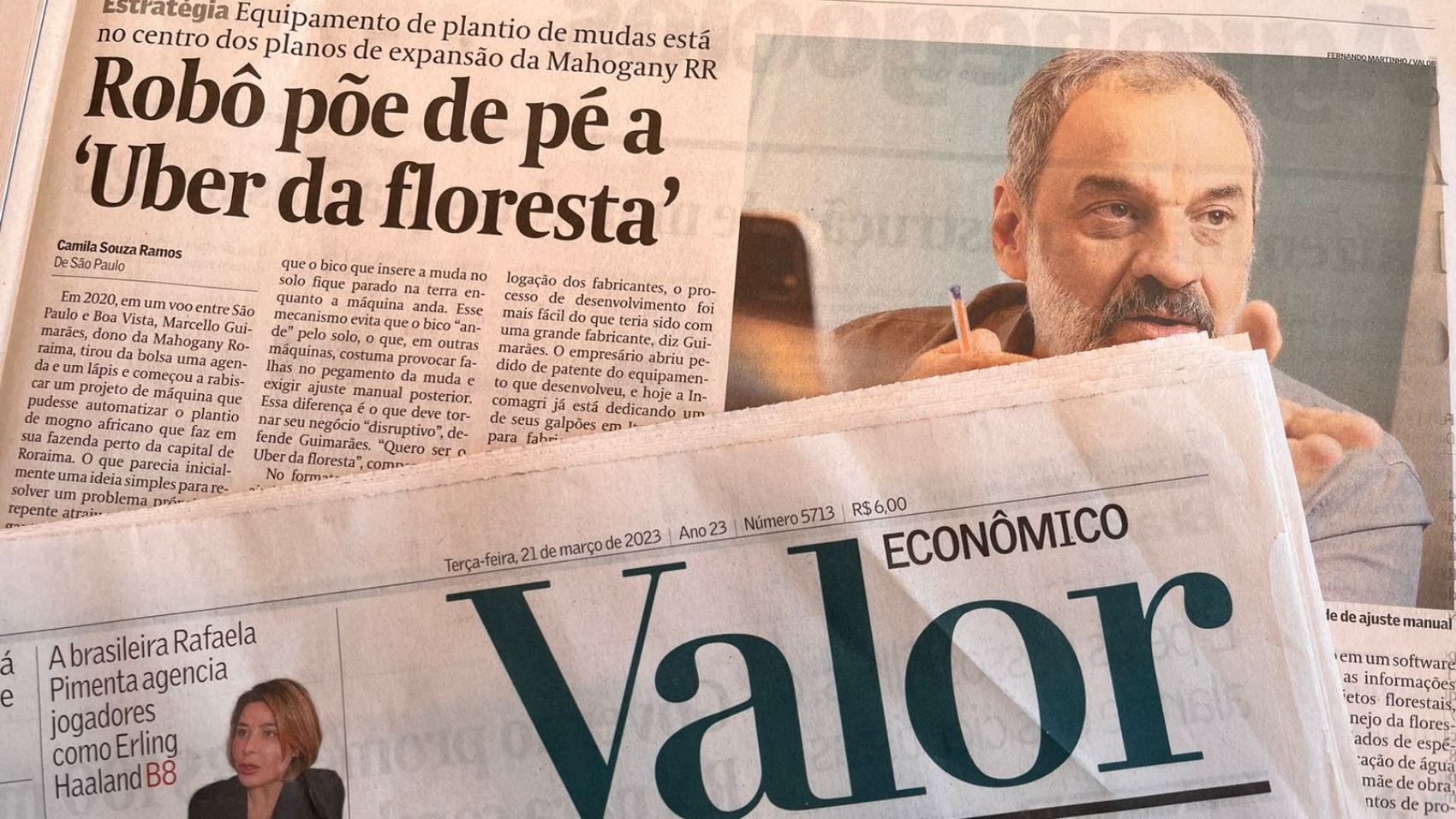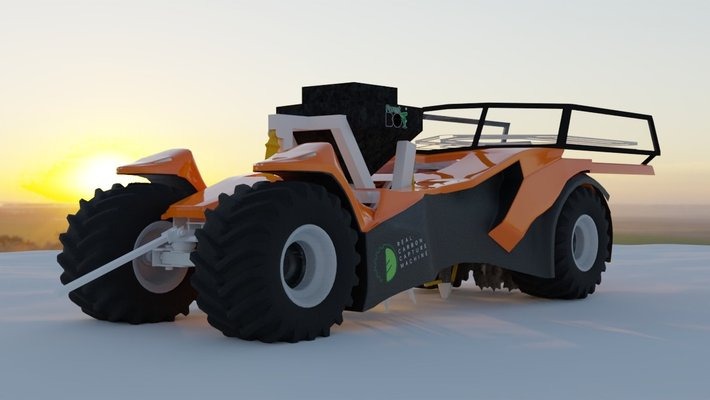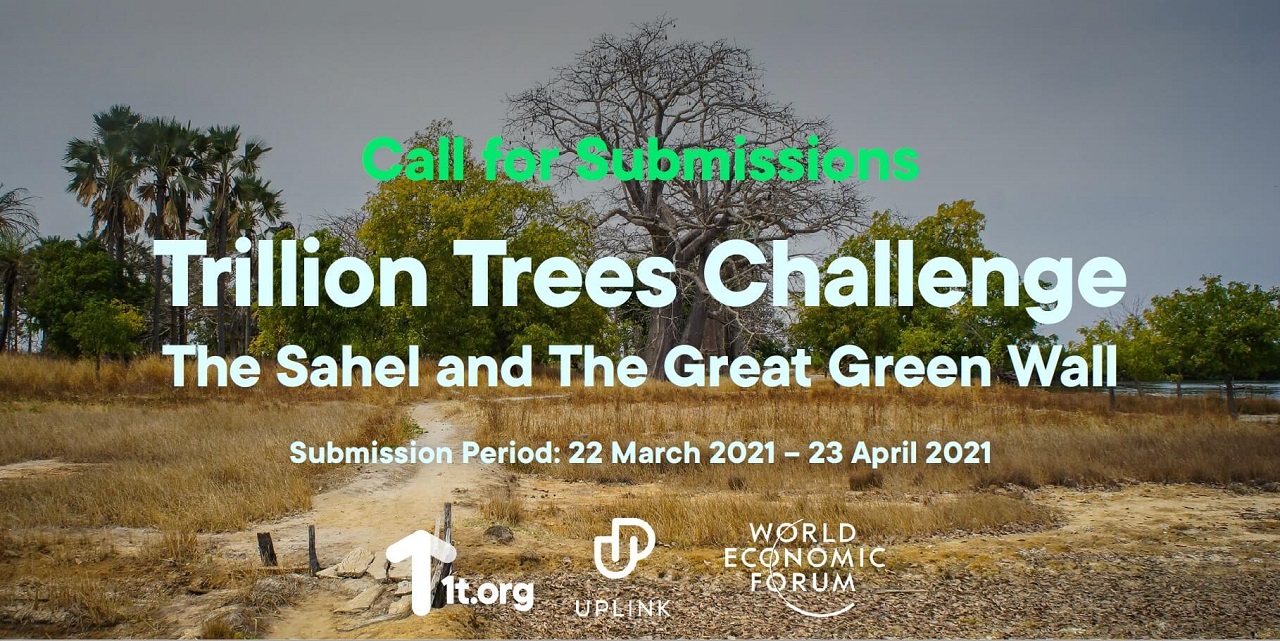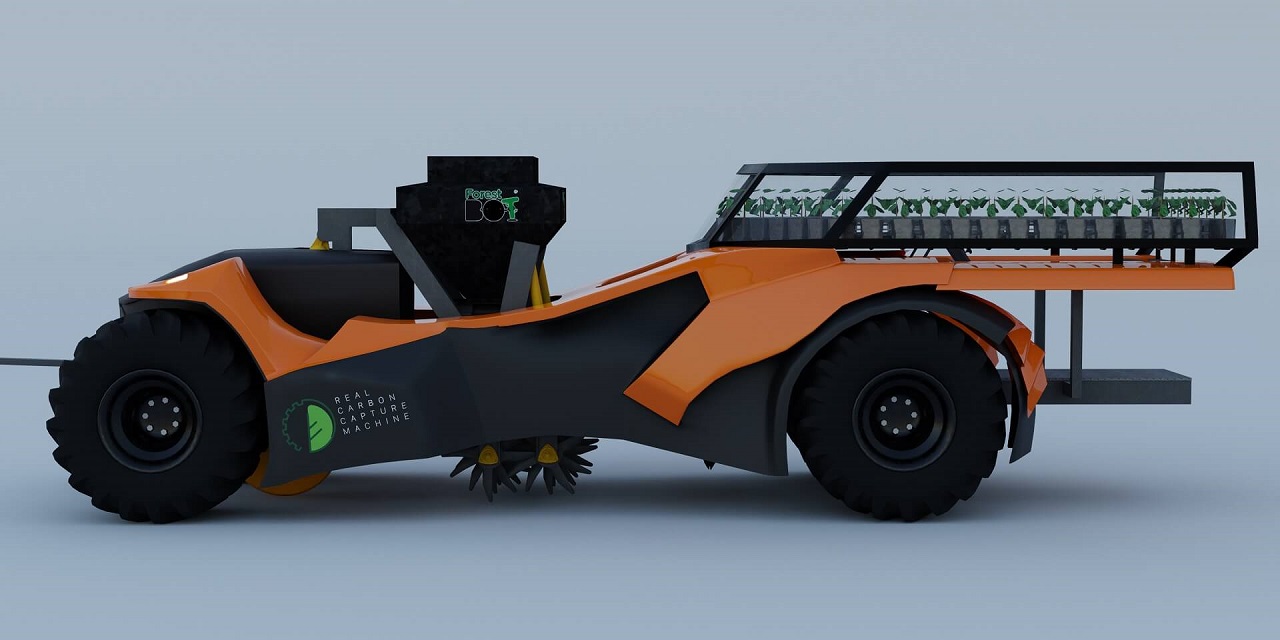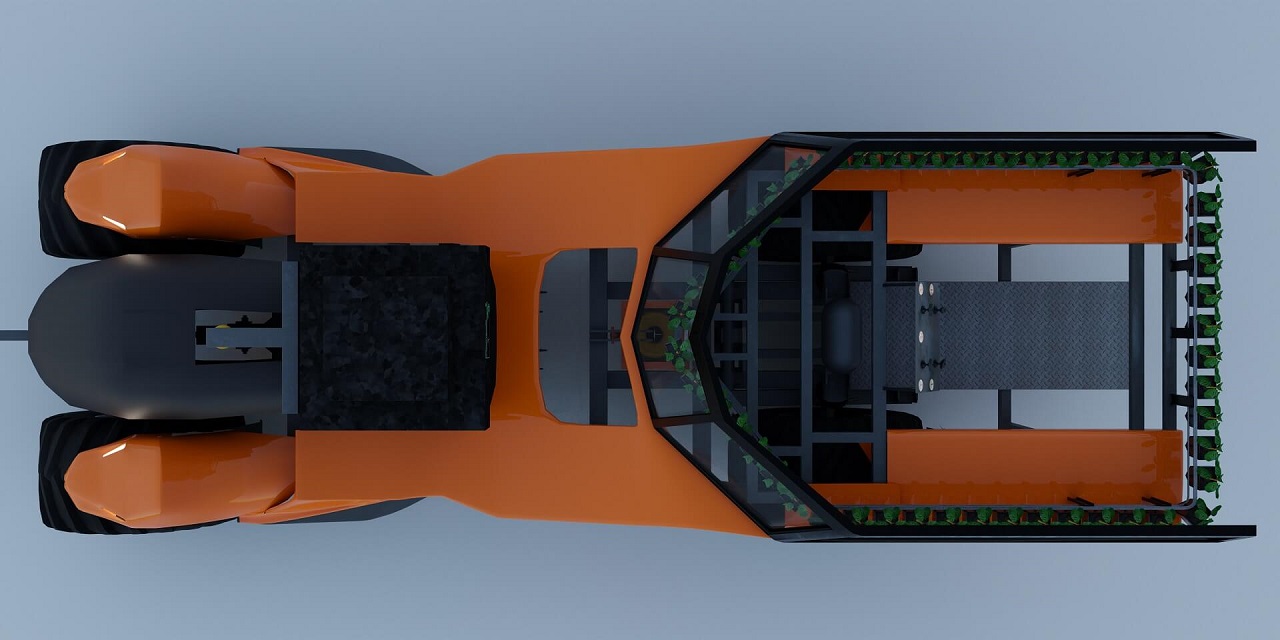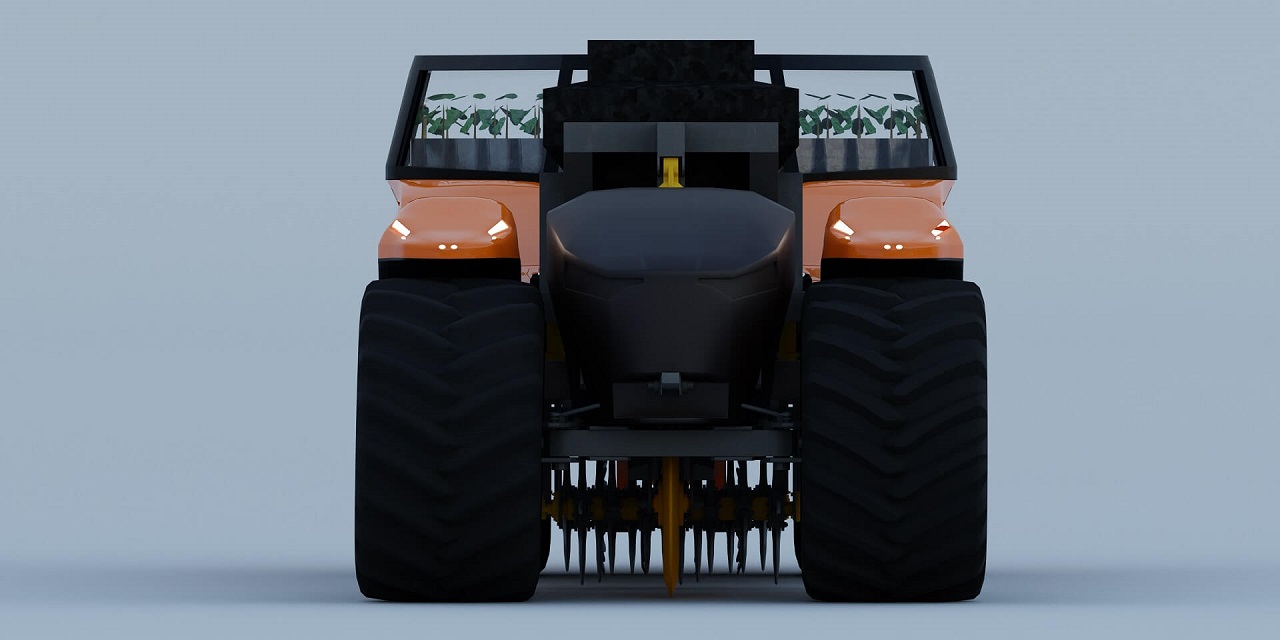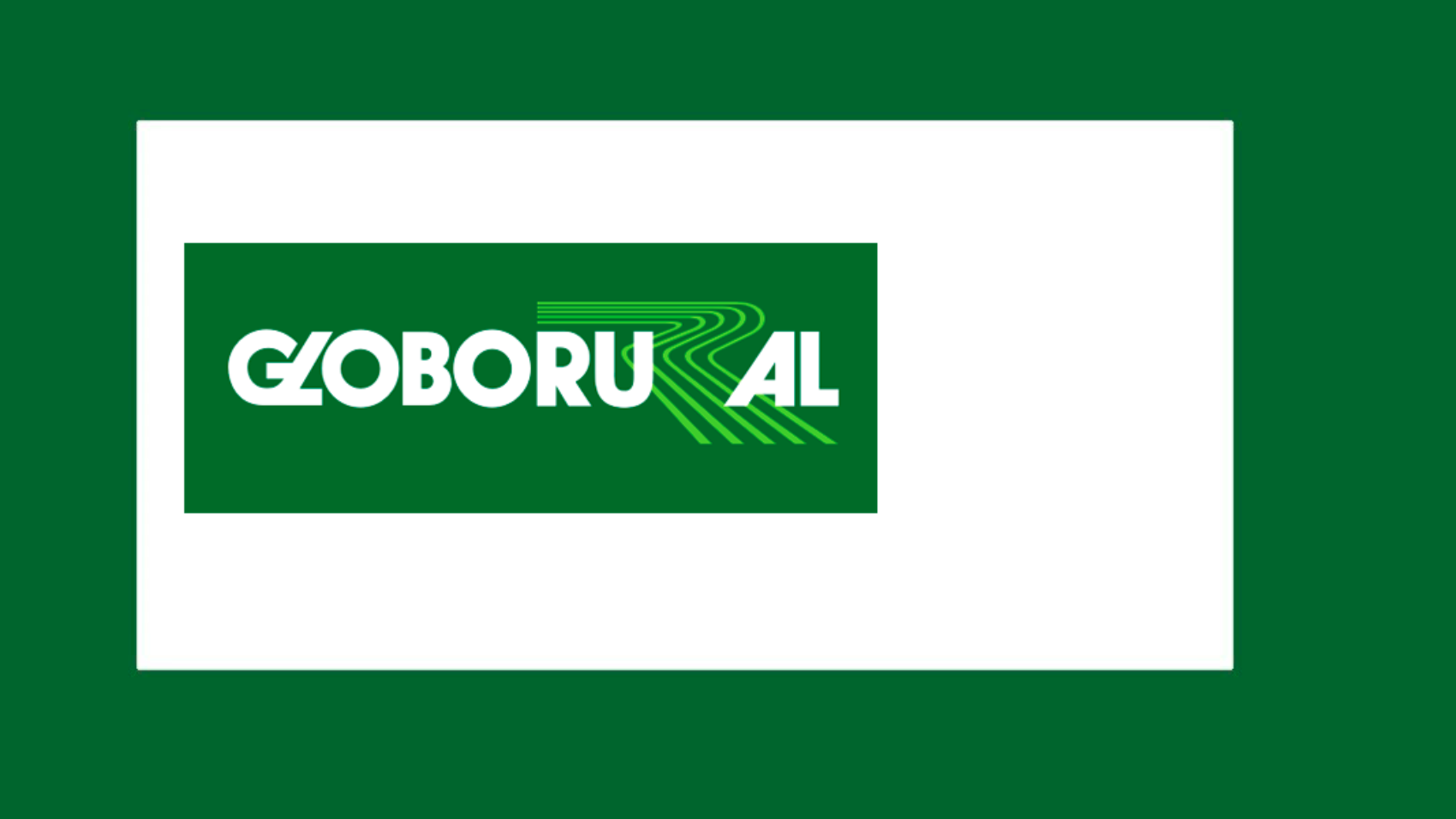In 2020, on a flight between São Paulo and Boa Vista, Marcello Guimarães, owner of Mahogany Roraima, took an agenda and a pencil out of his bag and began to scribble a machine project that could automate the planting of African mahogany that he does on his farm near the capital of Roraima. What initially seemed like a simple idea to solve a problem of its own suddenly attracted the interest of giants in the pulp and paper sector, evolved into the construction of a new business and, in July, will enter the Brazilian market as a solution to automate the planting of any type of tree, whether in commercial forests or in forest restorations.
The first prototype was built by a Venezuelan immigrant who was working on his farm and who had experience building agricultural machinery. After some tests and publications on social networks, Guimarães began to receive contacts from giants like Suzano and Eldorado. “Companies wanted to participate in the project,” he says.
Unlike other seedling planting machines, the one from Mahogany Roraima has a sliding track that allows the nozzle that inserts the seedling into the soil to remain stationary in the earth while the machine is moving. This mechanism prevents the beak from “walking” through the soil, which, in other machines, tends to cause failures in the seedling attachment and require subsequent manual adjustment. This difference is what should make your business “disruptive”, argues Guimarães. “I want to be the Uber of the forest”, he compares.
In its current format, the machine can still be used in any biome, “even the desert,” he says. He believes that the solution can also be used in the planting of pre-sprouted seedlings and sugar cane (“MPB”), an activity that is still predominantly manual.
The solution was creative, but there was no one to execute it. “I was just well-meaning,” he jokes. It was by chance that he received a call from his accountant, who revealed the existence of a small manufacturer of agricultural machinery and implements in the interior of São Paulo, Incomagri. By coincidence, the company from São Paulo already had a self-propelled machine, in which it would only be necessary to attach the nozzle and sliding conveyor mechanism designed on the plane.
Fast Development
The advantage of the partnership with Incomagri was the solution development speed. As all of the machine’s equipment already had approval from the manufacturers, the development process was easier than it would have been with a large manufacturer, says Guimarães. The businessman opened a patent application for the equipment he developed, and today Incomagri is already dedicating one of its warehouses in Itapira (SP) to manufacture the seedling planter, nicknamed Forest.bot.
Guimarães financed the development of the project with Mahogany Roraima’s earnings from the sale of Forest Replacement Credits for the cultivation of African mahogany. To produce and market Forest.bot, he opened a new company, Autonomus Agro Machines, and last October he granted 15% of the capital to Incomagri. At first, the machine will run on diesel, but the entrepreneur is already planning to develop electric and completely autonomous machines.
The company should already enter with an aggressive footprint in the market, with a value well below the competitors. A machine without intelligent suspension should cost R$ 2.98 million, while other planters already on sale cost more than R$ 4 million. According to Guimarães, the value was calculated so that it is included in the basic expense that pulp and paper companies have with the replacement of old machines. Thus, this cost does not need to be submitted for board approvals.
Lack of manpower
The segment that should first seek a solution is the pulp and paper industry, which has been complaining for years about the lack of labor to plant its pine and eucalyptus trees. In fact, Forest.bot tests are being carried out in some companies in the sector, such as Suzano and Eldorado. But Guimarães hopes that his invention can also act in ARR projects, which involve the planting of forests from scratch (afforestation), the restoration of recently deforested areas (reforestation) and the recovery of degraded soils (revegetation).
The businessman is excited about the potential of this activity, given the goals of the Paris Agreement and the Brazilian climate commitment, which includes the recovery of 12 million hectares of forest. In companies with training, the planting of 900 trees in half a hectare is usually done by nine workers within an hour. Just to recover the areas of forest that were deforested, he estimates that it would be necessary to plant 7 billion trees, which would require a much larger contingent of labor than what the forestry sector manages to keep in its ranks today. “The solution is to mechanize”, he argues.
The invention of Forest.bot is just Guimarães’ first step in the business of providing services for reforestation. The businessman, trained in information technology, is also working on software that gathers all possible information on forestry projects, from seeds to forest management, passing through data on planted species, application of water and fertilizer, registration of the work mother , use of protective equipment and georeferencing.
The idea, he says, is for this platform to connect landowners who want to carry out RR projects with those who want to finance it, guaranteeing an asset that is currently lacking in this market: transparency to ensure that the money invested is, in fact, reforesting the planet. His plan is for the platform to complement Forest.bot’s work, as the machines will be connected to the georeferencing system.


